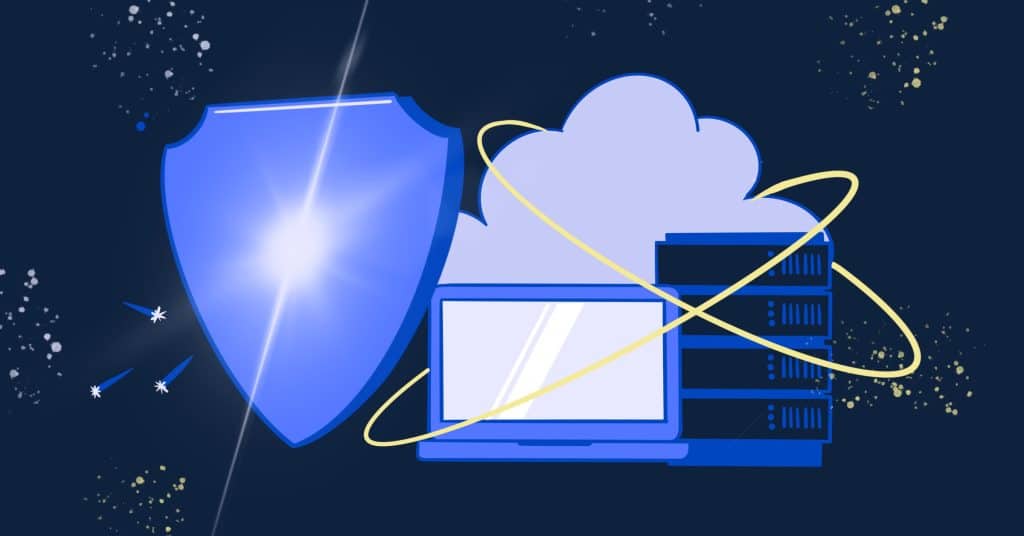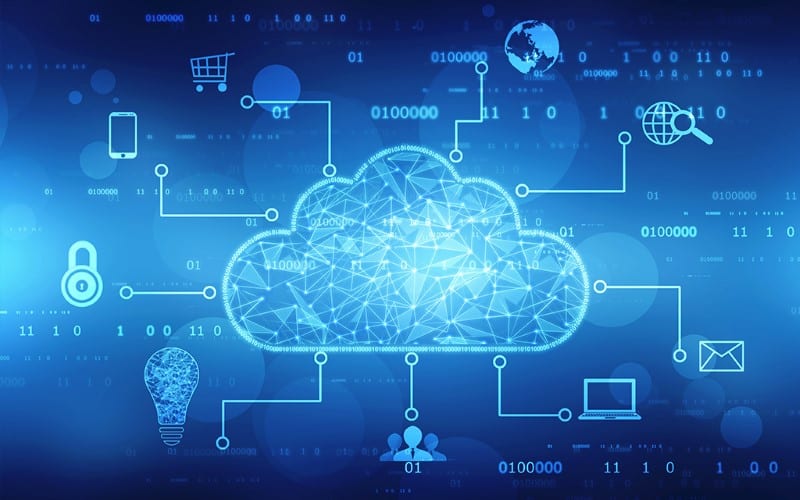Introduction
In today’s digital landscape, Software as a Service (SaaS) platforms are revolutionizing how businesses operate, offering scalable and efficient solutions. However, as these platforms become increasingly integral to business operations, the importance of SaaS security cannot be overstated. Ensuring the security of a SaaS platform is paramount, not only to protect sensitive data but also to maintain customer trust and comply with regulatory standards. In this blog post, we will explore the best practices for securing SaaS applications, focusing on how to build a secure SaaS platform.
The concept of SaaS security best practices involves a comprehensive approach that encompasses various aspects of cybersecurity. It’s not just about safeguarding data; it’s also about ensuring the integrity, availability, and confidentiality of the services provided. As SaaS platforms operate predominantly in the cloud, they face unique security challenges that require specialized strategies to address them effectively.
Given the critical nature of SaaS security, this blog aims to provide a detailed guide for developers, IT professionals, and business leaders. We’ll discuss essential considerations and strategies to implement robust security measures in SaaS platforms. From understanding the threats to implementing best practices, this post will serve as a comprehensive guide to securing SaaS applications.
Understanding the Landscape of SaaS Security
The Growing Importance of SaaS Security
The rise of SaaS solutions has been meteoric, but with this growth comes an increased risk of cyber threats. As more businesses migrate their operations to SaaS platforms, the need for robust SaaS security best practices becomes more critical. This shift necessitates a deep understanding of the unique security challenges posed by cloud-based services. It’s not just about protecting data in transit or at rest; it’s also about ensuring secure user access and maintaining service availability.
Identifying Common Security Threats in SaaS
To secure a SaaS platform effectively, one must first identify the common security threats these platforms face. This includes data breaches, account hijacking, insecure APIs, and threats from insider attacks. Understanding these risks is the first step in developing a comprehensive security strategy. It’s crucial to recognize that SaaS security is an ongoing process, requiring constant vigilance and adaptation to emerging threats.

SaaS Security Best Practices: The Foundation
Implementing Strong Authentication and Authorization Measures
One of the core saas security best practices is implementing robust authentication and authorization mechanisms. This involves more than just secure passwords; it requires multi-factor authentication (MFA), role-based access control (RBAC), and regular auditing of access privileges. Ensuring that users are who they claim to be and have appropriate access levels is critical in securing saas applications.
Data Encryption: At Rest and In Transit
Encrypting data, both at rest and in transit, is a fundamental aspect of SaaS security best practices. Encryption serves as a last line of defense, ensuring that even if data is intercepted or accessed without authorization, it remains unreadable and secure. This practice is crucial in safeguarding sensitive information against unauthorized access and data breaches.
Designing a Secure SaaS Architecture
The Role of Secure Coding Practices
Secure coding practices are essential in the development of any SaaS platform. This involves writing code with security in mind, such as input validation, error handling, and preventing common vulnerabilities like SQL injection and cross-site scripting (XSS). Adhering to secure coding standards is a key aspect of saas security best practices, as it helps prevent a wide range of security issues right from the start.
Regular Security Testing and Auditing
Regular security testing and auditing are critical components of maintaining a secure SaaS platform. This includes conducting vulnerability assessments, penetration testing, and code reviews. These practices help identify and remediate security flaws before they can be exploited by attackers, thereby reinforcing the overall security of the platform.
Ensuring Compliance and Data Privacy
Adhering to Regulatory Standards and Compliance
Compliance with regulatory standards such as GDPR, HIPAA, and SOC 2 is a crucial aspect of SaaS security. These standards provide frameworks and guidelines for protecting data and ensuring privacy. Adherence to these regulations not only ensures legal compliance but also builds trust with customers who are increasingly concerned about data privacy.
Privacy by Design in SaaS Platforms
Implementing privacy by design principles in SaaS platforms is a proactive approach to data privacy. This involves integrating data protection measures right from the initial design phase of the platform. It’s about considering privacy at every stage of development, ensuring that personal data is processed securely and in accordance with privacy laws.
Continual Monitoring and Incident Response
Proactive Monitoring for Anomalies and Threats
Continual monitoring is essential for detecting and responding to security incidents in real time. This involves using tools to monitor network traffic, user activities, and system logs for any unusual or suspicious behavior. Proactive monitoring is a key aspect of saas security best practices, as it enables quick detection and mitigation of potential security threats.
Developing an Effective Incident Response Plan
Having an effective incident response plan is vital in managing security breaches and minimizing their impact. This plan should outline the steps to be taken in the event of a security incident, including communication strategies, containment procedures, and recovery plans. Being prepared for security incidents is a crucial part of maintaining a secure SaaS platform.
Employee Training and Awareness
Cultivating a Security-Conscious Culture
Employee training and awareness are critical in reinforcing the security of a SaaS platform. Employees should be trained on the importance of security best practices, such as recognizing phishing attempts and following proper data handling procedures. Cultivating a security-conscious culture within the organization plays a significant role in preventing security breaches.
Choosing the Right Security Tools and Technologies
Selecting the appropriate security tools and technologies is crucial in building a secure SaaS platform. This includes firewalls, intrusion detection systems, and security information and event management (SIEM) solutions. These tools provide the necessary defenses to protect against various security threats and are integral to implementing saas security best practices.
The Importance of Backup and Disaster Recovery
Backup and disaster recovery plans are essential components of a comprehensive SaaS security strategy. These plans ensure that data can be recovered in the event of a cyberattack or system failure, thereby maintaining business continuity. Regular backups and well-defined disaster recovery procedures are crucial for mitigating the impact of security incidents.
Partnering with Security Experts
Lastly, partnering with security experts can provide valuable insights and expertise in securing a SaaS platform. Security consultants can offer guidance on best practices, conduct security audits, and assist in developing a robust security strategy. Leveraging external expertise is a wise step in ensuring the highest level of security for your SaaS platform.

Conclusion
Securing a SaaS platform is a complex and ongoing challenge that requires a comprehensive and proactive approach. By implementing the saas security best practices outlined in this blog, organizations can significantly enhance the security of their SaaS platforms. It’s about understanding the unique security challenges, adopting strong security measures, and continually adapting to new threats.
The importance of securing SaaS applications cannot be overstated in an era where data breaches and cyberattacks are becoming more sophisticated. A secure SaaS platform not only protects sensitive data but also builds trust with customers and ensures compliance with regulatory standards. Remember, security is not a one-time effort but a continuous process that involves constant vigilance and improvement.
In summary, the journey to building a secure SaaS platform involves understanding the security landscape, implementing foundational security practices, designing a secure architecture, ensuring compliance, and continually monitoring and responding to threats. By following these best practices, organizations can create a robust and secure environment for their SaaS applications, thereby safeguarding their business and their customers’ data against the ever-evolving landscape of cyber threats.
What is SaaS based security?
Software-as-a-Service (SaaS) based security refers to the use of cloud-based security solutions delivered through a subscription model. It offers companies the ability to protect their systems, data, and applications without the need for on-premises hardware or software installations.
How do you ensure SaaS security?
Implementing strong access controls, using encryption, regularly updating software, conducting security audits, and educating employees on best security practices.
What is the security responsibility of SaaS?
The security responsibility of SaaS lies with the SaaS provider.


